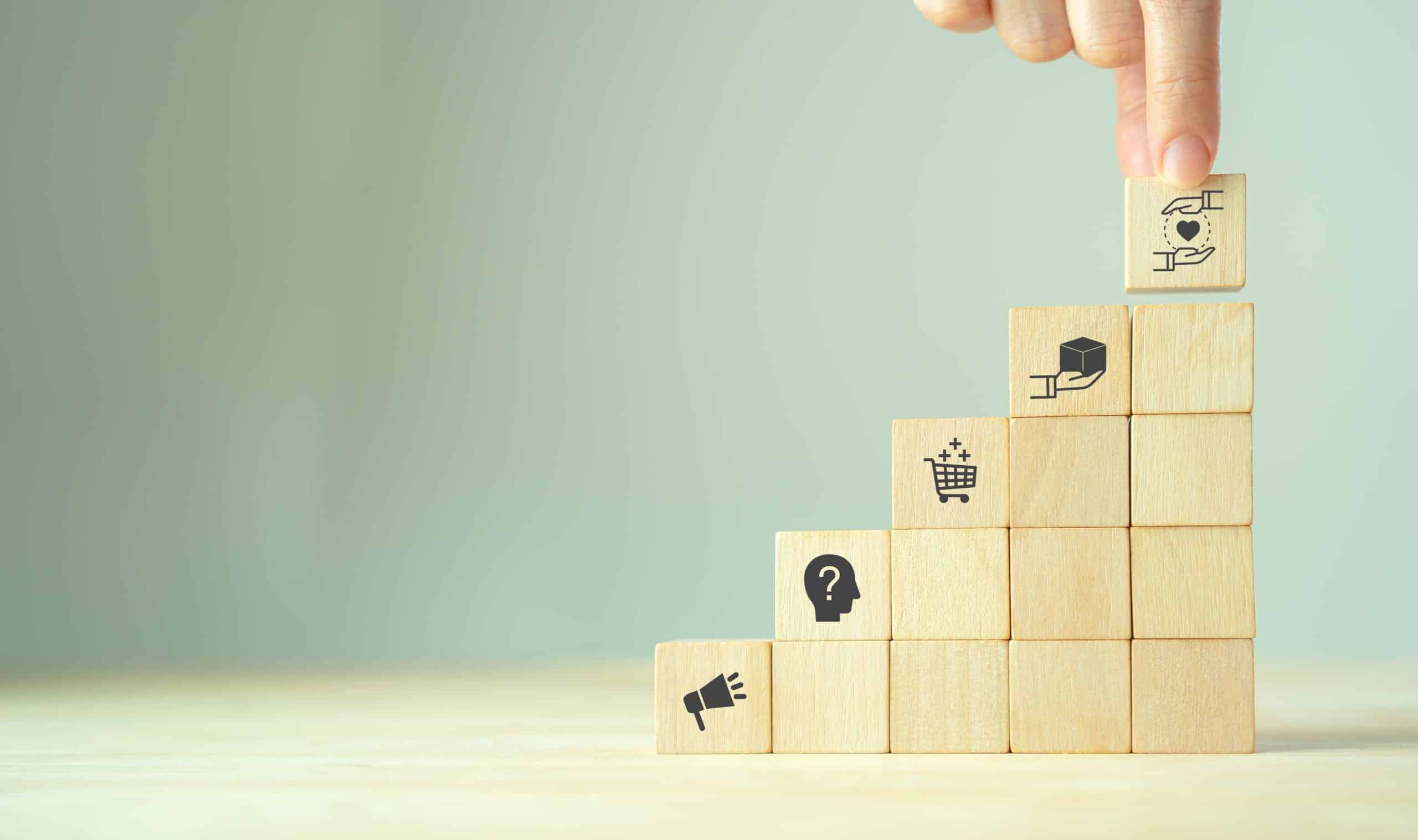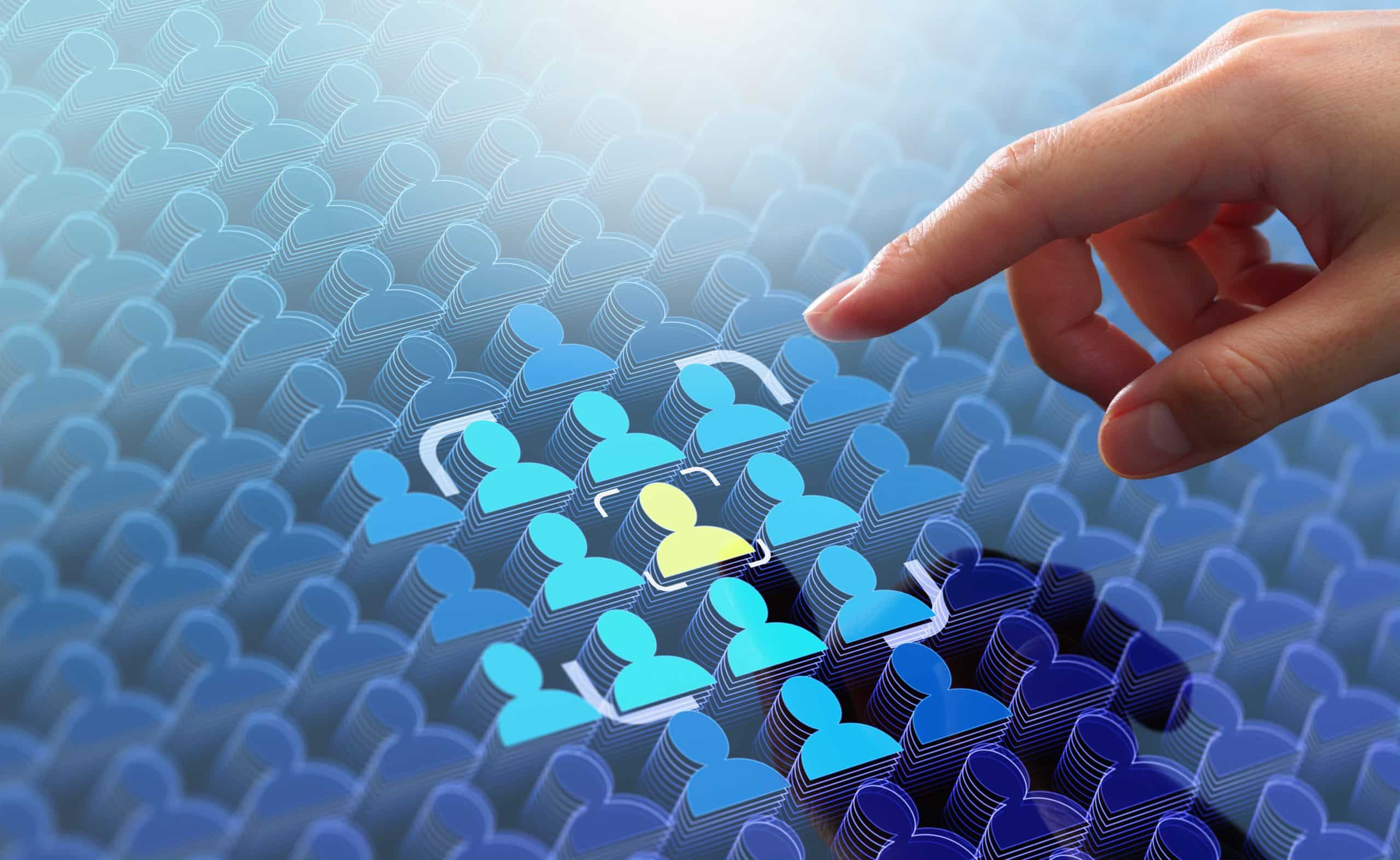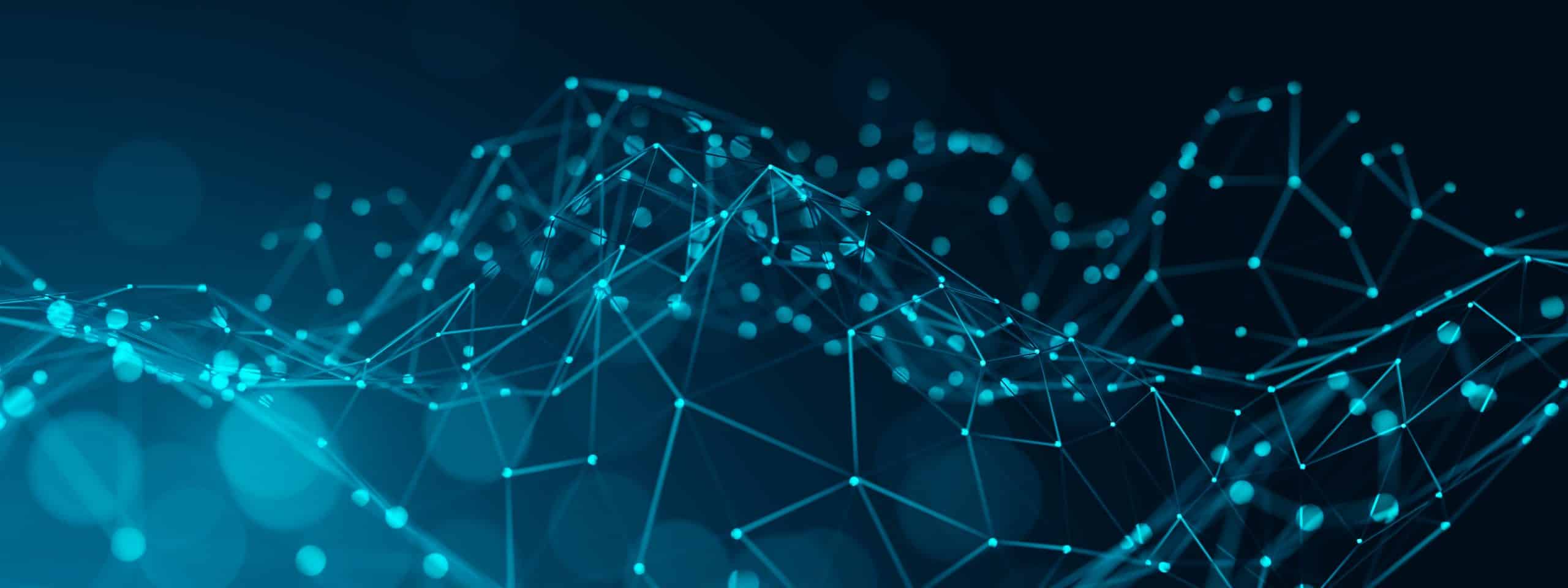While brainstorming content-creation topics and pinpointing effective channels are essential to producing an effective campaign, you’ll also benefit from taking a more considered approach that recognizes the importance of each step in your buyer’s journey.
What Is Content Marketing Funnel?
The Content Marketing Funnel is a framework that maps out how content is used to attract, engage, and convert potential customers at different stages of their buyer journey. It aligns your content with the mindset and needs of your audience as they move from awareness to purchase. At the top, a potential customer is poking around to learn options for fixing a problem (the awareness stage). If they see enough helpful information, they slide into the next stage (consideration), where they begin researching brands and doing comparisons. In the final stage (decision), they are looking to make a final decision and commit to a purchase. Each stage is about creating content that helps move the buyer further down the funnel.
It is vital to understand the needs and intent of your users, based on where they are in the buyer journey, in order to know how to address them and guide them toward your intended goal. Users may be looking for information, wanting to compare services, or searching for more details and testimonials on your product: In short, they need to experience your brand in a variety of ways in order to ultimately decide to make a purchase.
Breaking Down the Content Marketing Funnel
The buyer’s journey follows the three steps a customer takes when making a purchase decision:
- Awareness (ToFu): The buyer first becomes aware of your brand while looking for answers, resources, and potential solutions to a problem.
- Consideration (MoFu): At this point, the buyer evaluates potential solutions.
- Decision (BoFu): Finally, the buyer decides whether or not to buy what you’re offering.
If the advertiser is skillful in their strategy, the buyer will progress through the stages of knowing, then liking, then trusting your brand. Sales and marketing teams often depict these processes as a sales funnel model. While the model makes sense, the path isn’t always linear: That’s why Forrester created this maze-like diagram to demonstrate the complex path a buyer may take across an ever-expanding array of channels.
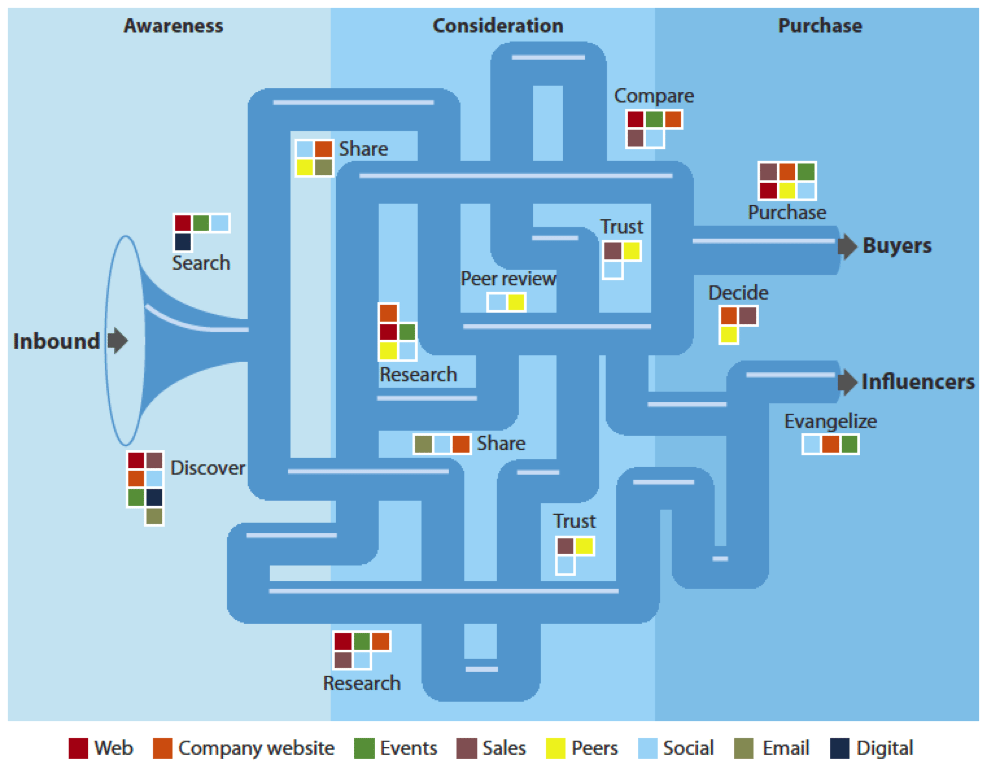
Essentially, the prospective buyer will bounce around en route to a purchase, and marketers can’t always predict how that journey will look. But by creating content to engage your customer and satisfy their informational needs across each stage of their buying journey, you have the best chance of securing their business down the line.
You can start by creating a list of questions people ask at each stage of their buying cycle. What kinds of things do your buyers need to know when they’ve never even heard of your brand? How does each piece of your existing content fit into the marketing funnel? Is each piece of content created intentionally with a certain customer at a certain stage in mind? Are there places where your content falls short of delivering useful answers or information?
By taking the time to examine what you already have, including what’s working and what isn’t, you’re better able to create content that helps achieve your campaign goals.
Now let’s take a closer look at the three stages in the buyer’s journey and how you can vary your message at each stage to communicate effectively.
Creating Awareness Stage Content
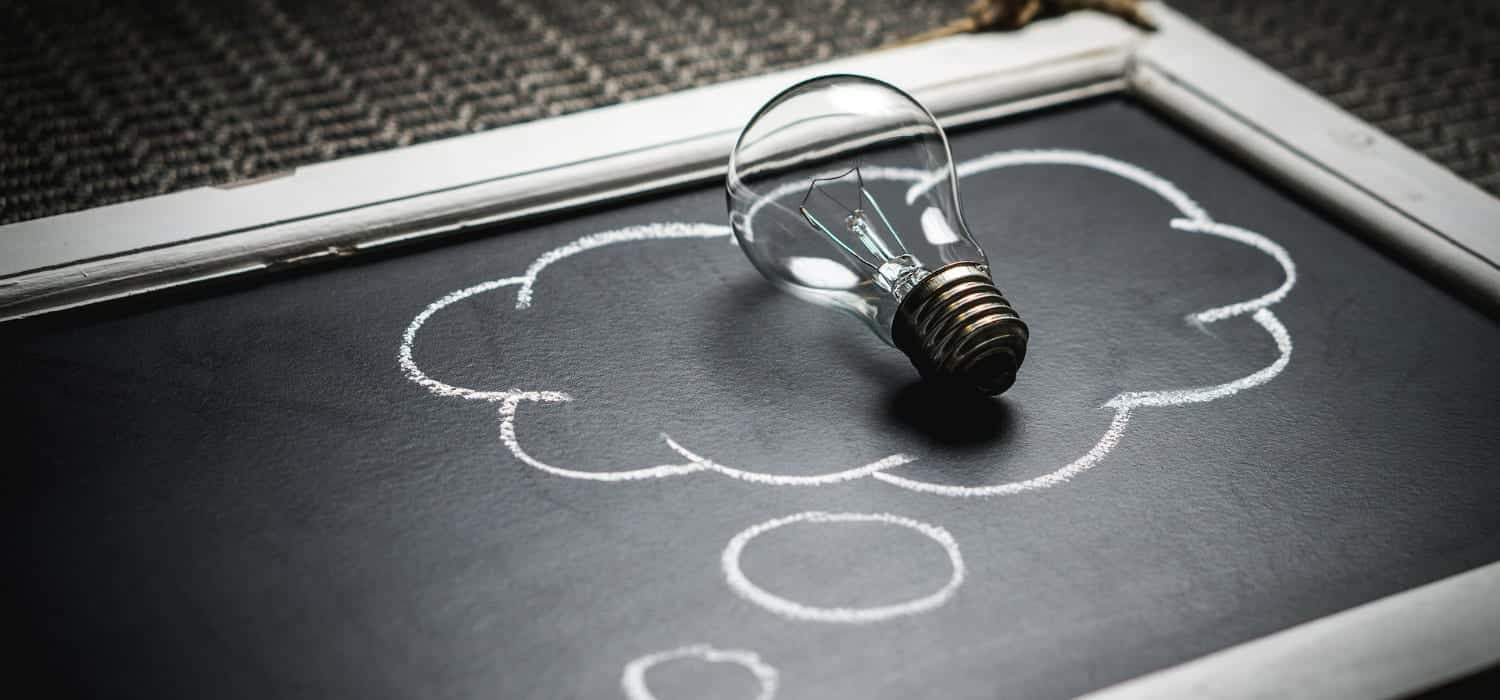
At the awareness stage, your content should focus on the buyer’s pain points, not your brand. The buyer is trying to solve a problem, and they might not know exactly what it is or what to do. They are researching general ideas that could help. They are not specifically thinking about buying, and they’re more in a questioning and learning stage.
A sale isn’t necessarily imminent, and the buyer isn’t ready to be sold to. However, trust-inducing and objective educational content will point buyers in the right direction and, hopefully, leave them wanting to learn more about what you offer.
Potential content types to offer at this stage include:
- Blog posts
- Videos
- Infographics
- Quizzes and interactive content
- Tools
- Checklists
- Webinars
- Research studies
- Ebooks
- Social content
Each of the above has the potential to serve the buyer’s needs in subsequent stages as well. At every stage, it’s wise to anticipate the channels that will either expose or lead your prospect to the content that will help further your marketing goals. At this stage (the top of the funnel), you can start by asking questions around these areas:
Search
- What keywords will help the content be discoverable via search?
- How can you create the level of quality needed to rank in search results?
- How might you craft content that authoritative publishers will link to?
Social media
- Which are the best channels to use to promote your content?
- Does your content have verbal and visual elements that will increase its chances of getting shared?
Advertising
- How will your ad pique the interest of your customer at this early stage in their journey without coming on too heavy or sales-driven?
- Should your content have a dedicated landing page?
If your awareness stage content is helpful and compelling, it might inspire the buyer to journey forward into the next phase of your funnel.
Now you can establish the action you want your prospect to take:
- Do you want your prospect to share, subscribe, call or contact, buy, try, or take some other action?
- If needed, does your content offer a clear call to action with a frictionless way for the buyer to take the next step?
- Will an incentive, such as a discount or reward, help increase your conversion rate?
Developing Consideration Stage Content

When prospects reach the middle of your funnel, they’re closer to buying. They’ve likely stepped up their problem-solving efforts and are taking various factors into consideration as they evaluate their options.
The consideration stage varies widely depending on the product or service. For consumer-facing content, middle of the funnel considerations might be minimal (for example, foods or clothing) or not (electronics, vehicles, or professional services). In most B2B instances, the consideration stage is often more intricate, it may take longer, and could involve additional decision-makers.
Plan your content accordingly and map it to specific questions prospects ask in both cases. Keep in mind the amount of information they’ll need in order to move forward in their buying journey. For example, someone purchasing a winter hat will likely need less information than someone purchasing a car. Make sure your content aligns with that in order to increase your chances of holding their interest.
The content types covered in the awareness section are still applicable here, and mapping content to mid-funnel content demands may also include:
- Case studies
- Samples
- FAQs
- Sales collateral
- Product/service comparisons
- Lead nurture emails
- Reviews
While the content you create for the consideration stage may convey a degree of objectivity, it should also introduce the merits of your solution and brand.
You should aim to communicate why your solution might be a good fit for the problem the customer is trying to solve. But keep in mind that in many product categories, going overboard to recruit an ill-fitted customer can backfire. In the interest of long-term success, you’d be wise to maintain your integrity and continue to focus on being helpful and forthright.
Let’s examine some channel-specific considerations.
If you’ve built email opt-in mechanisms into your funnel, you’re likely to employ email and marketing automation to promote your content.
Social and Search
Consider again the social media and search guidelines presented above. For search, explore keywords that suggest the prospect is actively shopping. For instance, you might target phrases including words such as: tool, service, product, solution, supplier, reviews, pros and cons, and “vs.” To increase reach and/or audience focus, you could step up social media efforts to target and deliver content to specific prospects and groups.
Advertising
To effectively promote the content buyers depend on for evaluating products and services, use native ads, content discovery feeds, and all forms of online advertising. Search ads might feature specific features and benefits to match a customer’s search and offer the solution they need.
Traditional Media
Will it make sense to use direct mail, radio, or television to promote your content? Even with the growing interest in newer digital channels, these platforms remain effective ways to reach consumers and encourage purchasing behavior.
Crafting Decision Stage Content
The decision stage is probably the most neglected by content creators. It tends to veer away from blogging and social media as it wanders largely into the sales realm. That is a great opportunity, however, to align sales and marketing departments, collaborate on strategy and content creation, and consider options that will tip the consumer into that next and final stage of buying.
Being brand-specific with your content at this stage is key. Again, many of the previously discussed content types could be fair game. In some situations, a webinar might be an ideal forum to convince a consumer to work with your brand. In others, a case study can highlight specific applications for your product or service that make it stand out above all others the customer might have been exploring.
Additional content types ideal for the decision stage of your sales process might include:
- Product presentations (meeting support materials).
- Product pages.
- Pricing information or tiers.
- Detailed tutorials.
- Proposals.
- Special offers.
In the decision stage, your interactions often become one-to-one as the consumer is focusing on your brand and looking to answer a few final questions. While information about pricing and other later-stage content types are now valuable, you’ll want to keep up with important digital touchpoints such as email and social media.
The Role of SEO in Optimizing Buyer’s Journey Content for Better Visibility
SEO is crucial for your customer journey. This is true for every kind of brand, and especially for those that are strictly e-commerce. Consumers are constantly surfing the web for ideas, entertainment, and information, and you need to make sure your brand can be found by top search engines, without the content ever sounding forced. You’ll want to make sure that your SEO strategy makes your content discoverable, and that your team is on top of any recent changes in search engine preferences and prioritizations.
Frequently asked questions (FAQs)
What are the steps in the buyer’s journey?
The steps in the buyer’s journey are awareness, consideration, and decision.
Do I need to create buyer personas?
Buyer personas can help you target your ads to segments and subsegments that can speak to your buyers in the most effective way. The goal is always true personalization, so creating buyer personas gets you closer to achieving this goal.
Is the buyer journey the same as the customer journey?
The buyer journey and customer journey differ in that the buyer journey ends with the purchase, and the customer journey continues after that to include ongoing engagement, communication, and potentially postpurchase sales.
The blog post you’re about to finish reading is top of the funnel content. And effective top-of-the-funnel content aims to generate leads and inspire action.
